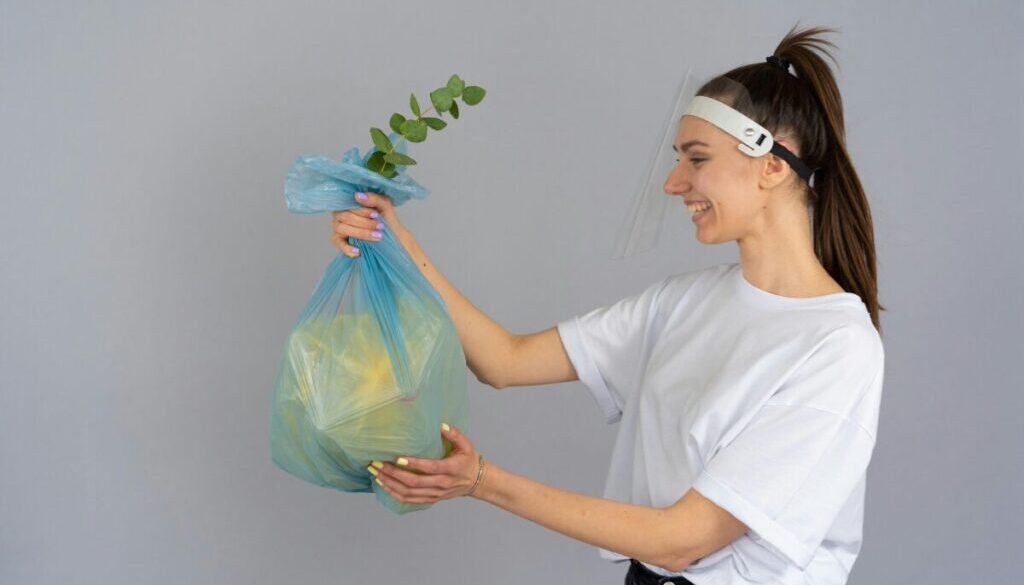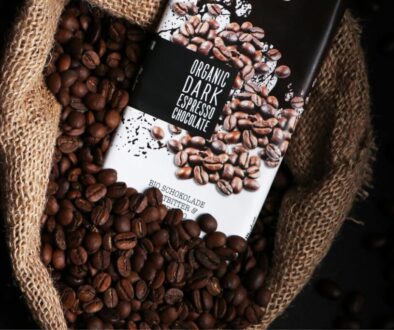Garbage Talk
Picture by Mikhail Nilov
Article By Helen Lovell-Wayne, MS
https://www.instagram.com/agreenerftr/
https://www.linkedin.com/in/helen-lovell-wayne/
This paper aims to inform consumers about the products they may currently be buying. Hopefully with enough demand from consumers, industries will supply safer and more sustainable products.
Millions of plastic bags find their final resting place in landfills every day. Rainwater lands on these bags, and the resulting runoff from these bags contaminates the water, soil, and air. The robust hydrogen bonds in these plastic bags grant them exceptional stability, making them highly resistant to biodegradation and requiring up to a millennium to degrade. (A.Sangjoon 2010). Bags found on consumers property and in landfills pose a risk of ingestion to animals such as dogs, raccoons, and pigs.
🗑️ Garbage Bags Decompose 🌦️
They ingest the bags to access the refuse inside (R. Sharma et al 2022), which is not good for either their health or the animal that consumes them. Lastly, the bags break down into microplastics (see microplastics, it’s what’s on the menu), which end up in our food and water, potentially resulting in serious health problems (R. Sharma et al 2022). With a few simple changes, this problem could be significantly reduced and eventually eliminated.
☀️Alternatives to Traditional Plastic Garbage Bags😮💨
Polyethylene bags ( regular plastic garbage bags) are currently created from crude oil and chemicals. One of these chemicals is DEHP (diethylhexyl phthalate). Despite its function in improving plastic stability, this substance has been linked to concerning human health effects, notably decreasing sperm levels and acting as a neurotoxin (Sangjoon 2010). Vinyl chloride plays a crucial role in the plastic bag manufacturing process. Vinyl Chloride is a known human carcinogen and exposure can lead to serious health issues, including liver, kidney, and brain damage (A. Sangjoon 2010).
Another problematic element of plastics is heavy metals. These additives enhance the physical and chemical properties of plastic bags when blended into the crude oil mixture (O. Alam, Yang, L. and Yanchun, X. 2019). There is no regulation for controlling heavy metal contents in plastic bags worldwide, so this type of pollution is increasing [1] O. Alam, Yang, L. and Yanchun, X. 2019). Plastic bags are environmentally the worst way to dispose of trash. Luckily, there are alternatives such as degradable, biodegradable, reusable, and compostable bags. Each one is not the ideal solution, but it is better than using plastic.
🌽Advantages of Compostable Garbage Bags☕️
For labeling, biodegradable bags must ultimately transform into carbon dioxide and water through natural decomposition. Additionally, they must not negatively impact plants that are grown in the soil they are placed in. These types of bags are further broken down into two types: Oxo-biodegradable and photodegradable (J. Chun et al. 2010). Oxo-biodegradable needs oxygen to biodegrade, and photodegradable needs UV light. So neither can decompose completely in a landfill (J. Chun et al. 2010). Both these types of bags are better than degradable bags. They degrade and fragment into smaller pastic pieces (A. Sangjoon 2010).
Starch derived from various plants (e.g., corn) forms the basis of compostable bags (Y. Grover 2016) . They must decompose at the compost site. Additionally, they must disintegrate into elements that are non-toxic (Y. Grover 2016). They are more effective than paper in regard to composting organic household waste (Y. Grover 2016).
🌎The Future of Garbage Bags💰
These types of bags could be useful for decomposing the 61 million tons of yard waste, food scraps and shredded paper that are put into landfills every year (H. Walsh, Niderost, C. and Price, K. 2020). In a landfill, items in plastic bags can persist for thousands of years due to the slow decomposition of plastic.(H. Walsh, Niderost, C. and Price, K. 2020). Simply using compostable bags would help alleviate this problem.
Currently, all the types of degradable garbage bags have come close, but none of them are completely biodegradable in all landfill conditions. However, they are all better than the traditional plastic bags. These alternatives cost a little more than traditional bags. However, the long-term health of the planet depends on everyone chipping in and doing their part.



